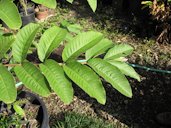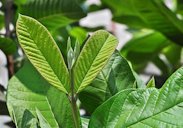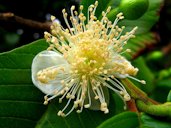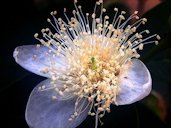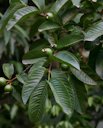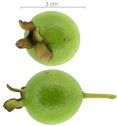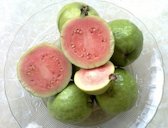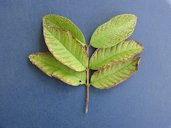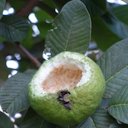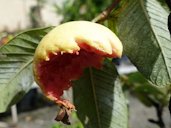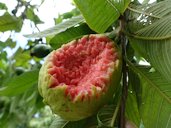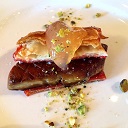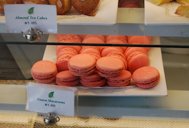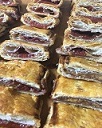| Guava - Psidium guajava | ||||||||||||||||||||||||||||||||||||||||||||||||||||||||||||
|---|---|---|---|---|---|---|---|---|---|---|---|---|---|---|---|---|---|---|---|---|---|---|---|---|---|---|---|---|---|---|---|---|---|---|---|---|---|---|---|---|---|---|---|---|---|---|---|---|---|---|---|---|---|---|---|---|---|---|---|---|
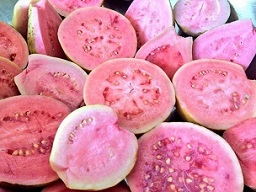 Fig. 1 Several guava cultivars from Guavonia Guava Grove in Homestead's Redland Agricultural area in Florida 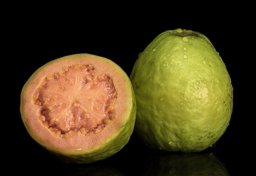 Fig. 2  Red guava P. guajava 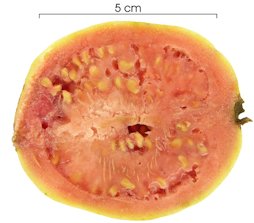 Fig. 3  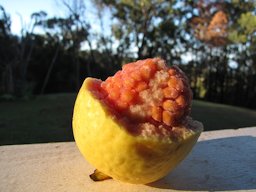 Fig. 4  P. guajava, guava fruit in half, Olinda, Maui, Hawai'i  Fig. 5 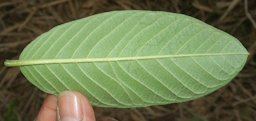 Fig. 6 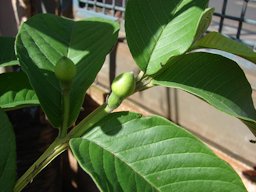 Fig. 10  P. guajava (Guava). Leaves. Lowes Garden Center Kahului, Maui, Hawai'i. 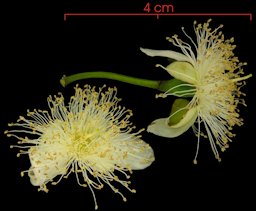 Fig. 11  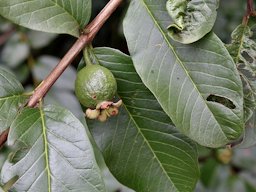 Fig. 18  P. guajava, fruit forming 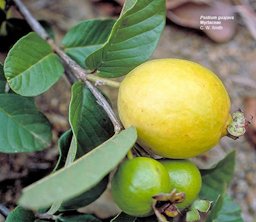 Fig. 19  P. guajava, guava 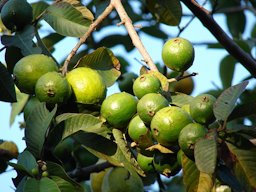 Fig. 20  P. guajava (fruit) Maui, Makawao, Hawai'i  Fig. 34  Common guava seedling, 14 months 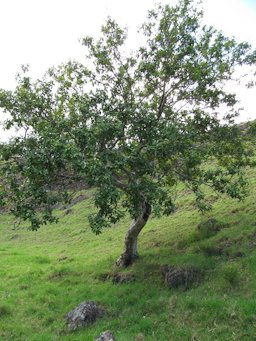 Fig. 35  P. guajava (Guava) habit Olinda, Maui, Hawai'i 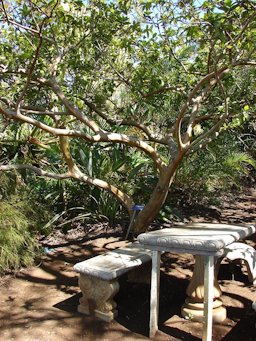 Fig. 36  P. guajava (habit), Maui, Enchanting Floral Gardens of Kula, Hawai'i  Fig. 37  Guava tree at Mounts Botanical Garden Florida 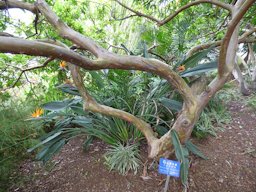 Fig. 38  P. guajava, trunk and bark at Enchanting Floral Gardens of Kula, Maui, Hawai'i 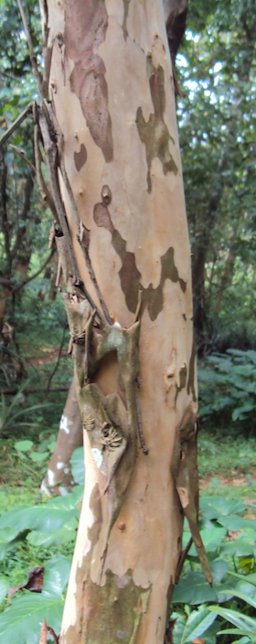 Fig. 39  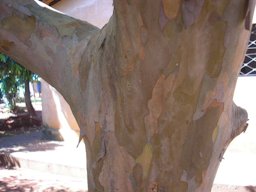 Fig. 40  Tronco da árvore de P. guajava  Fig. 41  Guavas, Bangalore  Fig. 42  Guava at a fruit stall in Pasar Baru, Jakarta, Indonesia 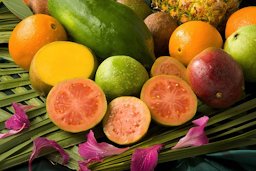 Fig. 43  Guava, the juicy, pink, sliced fruit in the center, is high in antioxidants 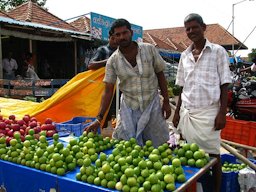 Fig. 50  India, Koyambedu market 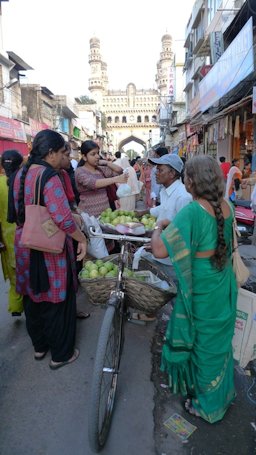 Fig. 51  Fruit vendor selling guavas at Laad Bazar near Charminar, Hyderabad 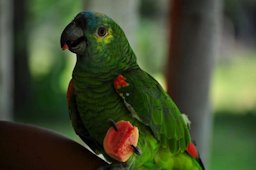 Fig. 52  Estancia La Carlota Corrientes  Fig. 53 Guava Daiquiri made with Bacardi Havana Club Rum, Redland Guava from Homestead, Florida and lime juice |
Scientific
name Psidium guajava L. Common names English: common guava, guava, lemon guava , yellow guava; Afrikaans: koejawel; French: goyavier; German: Guave, Guavenbaum, Guayave; India (Hindi): amrood; Japanese Rōmaji: banjirō; Portuguese: goiaba, goiabeiro; Portuguese (Brazil): araçá-goiaba, araçá-guaçú, guaiaba, guaiava; Spanish: guayaba, guayabo; Swedish: guava 8 Synonyms G. pumila (Vahl) Kuntze; G. pyrifera (L.) Kuntze; Myrtus guajava (L.) Kuntze; M. guajava var. pyrifera (L.) Kuntze; Psidium angustifolium Lam.; P. cujavillus Burm.f.; P. cujavus L.; P. fragrans Macfad.; P. guajava var. cujavillum (Burm.f.) Krug & Urb.; P. guajava var. guajava; P. guajava var. minor Mattos; P. guava Griseb.; P. igatemyense Barb.Rodr.; P. igatemyensis Barb. Rodr.; P.intermedium Zipp. ex Blume; P. pomiferum L.; P. pomiferum var. sapidissimum (Jacq.) DC.; P. prostratum O.Berg; P. pumilum Vahl; P. pumilum var. guadalupense DC.; P. pyriferum L.; P. pyriferum var. glabrum Benth.; P. sapidissimum Jacq.; P. vulgare Rich.; Syzygium ellipticum K.Schum. & Lauterb. 7 Relatives Cattley (Strawberry) guava (P. cattleianum), Costa Rican guava (P. freidlichiana), Brazilian guava (P. guineense), feijoa (Feijoa sellowiana), jambolan (Syzygium jambolanum), Malay apple (S. malaccense), Java apple, wax jambu (S. samarangense), water apple (S. aqueum), rose apple (S. jambos), Surinam cherry (Eugenia uniflora), grumichama (E. brasiliensis), pitomba (E. luschnathiana), and jaboticaba (Myciaria cauliflora) 1 Family Myrtaceae (myrtle family) Origin Guava is indigenous to the American tropics Uses Fruit; landscape specimen; hedge Height 20 ft (6.1 m) Crown Broad, spreading or upright 1 Plant habit Arborescent shrub or small tree 3 Growth rate Very quickly, often three to four feet in a single growing season 6 Longevity They live 30 to 40 years but productivity declines after the 15th year 2 Trunk/bark/branches Single or multi trunked; smooth, thin, copper-colored bark that flakes off, showing the greenish layer beneath; young branchlets are quadrangular 3 Pruning requirement Periodic pruning to improve the shape of the tree is recommended 6 Leaves Evergreen; large; opposite, oblong; serrated margins; prominent veins on the lower side; 3-7 in. (7.6–18 cm) in length 1 Flower Showy, white; has perfect flowers (male and female parts in each flower); new growth arising from either lateral buds on older wood or at the ends of shoots 1 Fruit Round, ovoid, or pyriform; commonly yellow in color; flesh white to deep pink or salmon-red; numerous small, reniform, hard seeds; flavor sweet, musky 3 Season Harvested in Florida all year long; main seasons are Aug.-Oct. and Feb.-Mar. USDA Nutrient Content pdf Light requirement Full sun to partial shade Soil tolerances Moist to dry soil pH preference 4.5-7.0 Drought tolerance High Flood tolerance Moderate Wind tolerance Generally tolerant of windy conditions Aerosol/soil salt tolerance Will take some salt spray, but are not recommended for highly exposed locations on seaside or Intracoastal areas 6 Cold tolerance 27-28 °F (-2.8-2.2 °C) Plant spacing 33 ft (10 m); 16 ½ ft (5 m) apart is possible if the trees are "hedged" 2 Roots Trees produced by cuttings and air-layering have shallow root systems; some deep roots but no distinct taproot 4 Invasive potential * Guava has been assessed by the IFAS Invasive Plants Working Group as invasive and not recommended by IFAS for planting in south Florida; guava may be planted in central Florida but should be managed to prevent escape 1 Pest resistance Guava trees are attacked by a number of insect pests including the Caribbean fruit fly, guava whitefly, red-banded thrips, guava fruit moth, and scales 1 Known hazard P. guajava has insecticidal properties 4 Reading Material Guava Growing in the Florida Home Landscape, University of Florida pdf Psidium guajava L., World Agroforestree Database Tropical Guava, California Rare Fruit Growers Guava, Fruits of Warm Climates The guava, Manual Of Tropical And Subtropical Fruits Origin The guava originated in the American tropics, probably in Central America. It was widely distributed prior to the arrival of the Europeans. 5 The Glorious Guava, History of the guava, Edible South Florida Description The common guava is easy to grow and tolerates adverse conditions. The tree is attractive and the patchy bark lends visual interest. It bears prolific quantities of fruit. The aromatic fruit is well regarded throughout the American tropics and beyond. Unfortunately, the guava is a primary host of the Caribbean fruit fly. In addition, it is classified as an invasive exotic. When making planting decisions, the gardener should weigh these two drawbacks against the guava's many attributes. 5 Leaves Leaves opposite, simple; stipules absent, petiole short, 3-10 mm long; blade oblong to elliptic, 5-15 x 4-6 cm, apex obtuse to bluntly acuminate, base rounded to subcuneate, margins entire, somewhat thick and leathery, dull grey to yellow-green above, slightly downy below, veins prominent, gland dotted. 4 Crushed leaves are aromatic.
Fig. 8. P. guajava (Guava) leaves habit, Ki Hana Nursery Kihei, Maui, Hawai'i Fig. 9. Leafbud of common guava (P. guajava), Burdwan, West Bengal, India Flowers White, about 1 inch (2.54 cm) in diameter, borne singly or in small groups (cymes) in axils of leaves of recent growth. 1 Flowers are produced on branchlets of recent growth, and are an inch broad, white, solitary, or several together upon a slender peduncle. The calyx splits into irregular segments; the four petals are oval, delicate in texture. In the center of the flower is a brush-like cluster of long stamens. 3 One of the most critical botanical characteristics of guava is that flowers are borne on newly emerging lateral shoots, irrespective of the time of year. 4
Fig. 12. P. guajava or Bayabas in Barangay San Francisco (flower buds) Fig. 13. Flor de Goiabeira. GOIABA - Guava, (P. guajava) Ceret São Paulo. Brazil and Central America native tree Fig. 16. P. guajana flower and flower buds Fig. 17. P. guajana flower habit Fruit A berry with few to many small brown seeds. Fruit shape ranges from round, ovoid to pear-shaped. Fruit weight ranges from 1 ounce to 48 ounces (28 g - 1.4 kg). The peel color ranges from green to yellow and flesh color may be white, yellow, pink or red. Fruit peel thickness may be thin or thick and depends upon cultivar. There is a wide range in flavor and aroma, ranging from sweet to highly acid and strong and penetrating aroma to mild and pleasant. 1 When immature and until a very short time before ripening, the fruit is green, hard, gummy within and very astringent. Fruits are borne by new shoots from mature wood. If trees bear too heavily, the branches may break. Therefore, thinning is recommended and results in larger fruits. The fruit matures 90 to 150 days after flowering. 2 The white fleshed varieties tend to be slightly more acid than the pink or dark colored varieties. 6
Fig. 21. Guava, Nyabamba Bridge, Chimanimani District, Zimbabwe Fig. 22. Immature fruit Fig. 23. Indonesian white fruit, Pali o Waipio, Maui, Hawai'i Fig. 24. Mature fruit Fig. 25. P. guajava (local: Jambu batu) from Indonesia Fig. 26. 'Vietnamese' pink guava Fig. 27. 'Vietnamese Giant' guava tree at the Kampong, Coconut Grove, Florida; fruits on the tree and on the ground were all infested with fruit flies Fig. 28. P. guajava, seeds wet Fig. 29. P. guajava, seeds dry South Florida Harvest Calendar, Fresh from Florida Varieties Page Harvesting Guava trees generally begin fruit production 3 to 4 years after planting and yields range from 50 to 80 lbs (23-36 kg) or more per tree per year. In Florida, guava may produce two crops per year; the main crop during summer followed by another smaller crop during early spring. However, through simple pruning techniques fruit may be produced nearly year-round. 1 Pollination Self-pollination is possible but cross-pollination by insects results in higher yields. 1 The chief pollinator of guavas is the honeybee (Apis mellifera). The amount of cross-pollination ranges from 25.7 to 41.3%. 2 The pollen is viable for up to 42 hours and the stigmas are receptive for about 2 days. 4 Propagation Guava seeds remain viable for many months. They often germinate in 2 to 3 weeks but may take as long as 8 weeks. Pretreatment with sulfuric acid, or boiling for 5 minutes, or soaking for 2 weeks, will hasten germination. Seedlings are transplanted when 2 to 30 in (5-75 cm) high and set out in the field when 1 or 2 years old. Inasmuch as guava trees cannot be depended upon to come true from seed, vegetative propagation is widely practiced. 2 Veneer and cleft grafting and chip budding are more successful on young vigorous seedling rootstocks. Scion material should be from terminal stem growth which is still green and quadrangular. 1 Seedlings may flower within 2 years; clonally propagated trees often begin to bear during the first year after planting. Trees reach full bearing after 5- 8 years, depending on growing conditions and spacing. 4 A simple method of propagation, which may be employed when it is desired to obtain a limited number of plants from a bush producing fruits of particularly choice quality, is as follows: With a sharp spade cut into the soil two or three feet from the tree, severing the roots which extend outward from the trunk. Sprouts will soon make their appearance. When they are of suitable size they may be transplanted to permanent positions. They will, of course, reproduce the parent variety as faithfully as a bud or graft. 3 Types of Propagation, Edible South Florida A Rapid Method of Propagation The Guava, Sub-Tropical Experiment Station, Homestead, Florida pdf Planting In general, guava trees should be planted in full sun for best growth and fruit production. Select a part of the landscape away from other trees, buildings and structures, and power lines. Remember guava trees can grow to 20 ft (6.1 m) in height if not pruned to contain their size. Select the warmest area of the landscape that does not flood (or remain wet) after typical summer rainfall events. 1 Guava Growth Progression from Pruning to Harvest, Tropical Fruit Photography Archive Guava Cultivation, Archives of the Rare Fruit Council of Australia Cold tolerance Trees will be injured by cold weather and will freeze at about 28 degrees F but will come back from the lower portions once the damaged areas are pruned out. 6 Pruning Trees that are bearing fruit may be kept small (3 to 6 ft high) through continuous selective pruning and tipping or allowed to grow into slightly larger trees (6 to 12 ft). 1
Off-season fruit production Pruning may be used to induce off-season flowering and fruit production. Guava trees flower on new succulent, vigorous new growth arising from either lateral buds on older wood or at the ends of shoots. A period of 2–3 weeks without watering and then pruning will force new vegetative growth and flowering. Many times withholding water is not necessary. 1 Fertilizing In Florida, young guava trees should be fertilized every 1 to 2 months during the first year. Fertilizer mixtures containing 6 to 10% nitrogen, 6 to 10% available phosphoric acid, 6 to 10% potash, and 4 to 6% magnesium give satisfactory results with young trees. For bearing trees potash should be increased to 9 to 15% and available phosphoric acid reduced to 2 to 4%. Examples of commonly available fertilizer mixes include 6-6-6-2 [6 (N)-6 (P2O5)-6 (K2O)-2 (Mg)] and 8-3-9-2 [8 (N)-3 (P2O5)-6 (K2O)-3 (Mg)]. 1 From spring though summer, trees should receive 3 to 4 annual nutritional sprays of copper, zinc, manganese, and boron. 1 Irrigation Once guava trees are 2 or more years old irrigation will be beneficial to plant growth and crop yields during prolonged dry periods. The period from bloom and through fruit development is important and drought stress should be avoided at this time with periodic watering. 1 Guava Pests and Beneficial Insects, University of Florida pdf Diseases Page Other Injuries Some nutritional problems, particularly a lack of minor elements, often occur on highly alkaline soils and trees benefit from periodic applications of nutritional sprays. 6
Fig. 30. Potassium deficiency Fig. 31. Guava: rat feeding injury Fig. 32,33. Guava: bird feeding injury to fruit Food Uses Raw guavas are eaten out-of-hand, but are preferred seeded and served sliced as dessert or in salads. More commonly, the fruit is cooked and cooking eliminates the strong odor. Bars of thick, rich guava paste and guava cheese are staple sweets, and guava jelly is almost universally marketed. It is made into syrup for use on waffles, ice cream, puddings and in milkshakes. Guava juice and nectar are among the numerous popular canned or bottled fruit beverages of the Caribbean area. There are innumerable recipes for utilizing guavas in pies, cakes, puddings, sauce, ice cream, jam, butter, marmalade, chutney, relish, catsup, and other products. 2
Fig. 44. Seared foie gras inside a guava pastelito, topped with PG Tropicals' Redland guava marmalade and guava jelly from Homestead, Florida at La Fresa Francesa in Hialeah, FL Fig. 45. Guava macarons, Mililani, Hawai'i, United States Fig. 46. Guava ice cream made with Redland guava from Homestead, Florida in Miami's Little Havana at Azucar Ice Cream Co. Fig. 47. Canapes "Timbitas" prepared with cream cheese and Redland guava from Homestead, Florida for Burger Beast' 7 Year Blogiversary at Palomilla Grill in Miami, FL Fig. 48. Turnover pastries "Pastelitos" prepared by Pastelito Papi, made with Redland Guava from Homestead, FL Fig. 49. Beverage factory "Casa Garay", city and province of Pinar del Rio, Cuba, guayabita literally means 'little guava' Guava Recipes, Edible South Florida The Queen of All Pudding, Native Fuel: Key West Edition Recipes, Tropical Fruit Growers of South Florida ext. link South Florida Tropicals: Guava, University of Florida pdf (archived) Medicinal Properties ** The roots, bark, leaves and immature fruits, because of their astringency, are commonly employed to halt gastroenteritis, diarrhea and dysentery, throughout the tropics. Crushed leaves are applied on wounds, ulcers and rheumatic places, and leaves are chewed to relieve toothache. The leaf decoction is taken as a remedy for coughs, throat and chest ailments, gargled to relieve oral ulcers and inflamed gums; and also taken as an emmenagogue and vermifuge, and treatment for leucorrhea. It has been effective in halting vomiting and diarrhea in cholera patients. It is also applied on skin diseases. A decoction of the new shoots is taken as a febrifuge. The leaf infusion is prescribed in India in cerebral ailments, nephritis and cachexia. An extract is given in epilepsy and chorea and a tincture is rubbed on the spine of children in convulsions. A combined decoction of leaves and bark is given to expel the placenta after childbirth. 2 Other Uses The leaves and bark are rich in tannin (10% in the leaves on a dry weight basis, 11-30% in the bark). The bark is used in Central America for tanning hides. Malayans use the leaves with other plant materials to make a black dye for silk. In southeast Asia, the leaves are employed to give a black color to cotton; and in Indonesia, they serve to dye matting. 2 General From the Greek psidion (pomegranate), due to a fancied resemblance between the two fruits. 4 Dehydrated guava juice powder was used as a source of vitamin C to fortify rations of Allied troops during the Second World War. 9 Guava, Tropical Fruit Growers of South Florida v2 Further Reading Guava, Psidium guajava, Fruitipedia Cost Estimates of Producing Pink Guava (Psidium guajava L.) in South Florida, University of Florida pdf Cost Estimates of Establishing and Producing Thai Guavas in Florida, University of Florida pdf (Archived) Guava, Tropical Fruit News, RFCI Guava Botanical Art List of Growers and Vendors |
|||||||||||||||||||||||||||||||||||||||||||||||||||||||||||
| Bibliography 1 Crane, Jonathan H., and Carlos F. Balerdi. "Guava growing in the Florida Home Landscape." Horticultural Sciences Dept., UF/IFAS Extension, Original pub. date Oct. 1979, Revised Jan. 1998, Oct. 2005, and Nov. 2016, Reviewed Dec.2019, AkIFAS, edis.ifas.ufl.edu/mg045. Accessed 29 June 2017, 9 Mar. 2020. 2 Fruits of Warm Climates. Julia F. Morton, Miami, 1987. 3 Popenoe, Wilson. Manual Of Tropical And Subtropical Fruits. 1920, London, Hafner Press, 1974. 4 Orwa C. et al. "Psidium guajava L." Agroforestree Database:a tree reference and selection guide version 4.0, 2009, worldagroforestry.org. Accessed 1 Feb. 2017. 5 Boning, Charles R. Florida's Best Fruiting Plants- Native and Exotic Trees, Shrubs, and Vines. Sarasota, Pineapple Press, 2006. 6 Joyner, Gene. Rare Fruit Council International Miami RFCI, Tropical Fruit News, Feb. 1994. 7 "Psidium guajava L. synonyms." The Plant List (2013), Version 1.1, www.theplantlist.org/tpl1.1/record/kew-161353. Accessed 2 Feb. 2017. 8 "Taxon: Psidium guajava L." USDA, Agricultural Research Service, National Plant Germplasm System, Germplasm Resources Information Network (GRIN-Taxonomy), National Germplasm Resources Laboratory, Beltsville, Maryland, 2019, U.S. National Plant Germplasm System, npgsweb.ars-grin.gov/gringlobal/taxonomydetail.aspx?id=30205. Accessed 10 Mar. 2020. 9 Chan, Y. K. "Guava Production." Archives of the Rare Fruit Council of Australia, Fruit Reasearch Branch, Mardy, Malaysia, Feb. 1984, rfcarchives.org.au. Accessed 29 June 2017. Videos v1 "How to Prune a Guava Tree." Papaya Tree Nursery, Presenter Alex Silber, 23 Sept. 2009 (CC0), www.youtube.com/watch?v=bctw8j4wfwA. Accessed 5 Dec. 2021. v2 "Guava." Tropical Fruit Growers of South Florida, www.youtube.com/watch?v=pTiazK9Bur0&feature=youtu.be. Accessed 2 Mar. 2019. Photographs Fig. 1 Zaldivar, Jorge. "Several guava cultivars from Guavonia Guava Grove in Homestead's Redland Agricultural Area in Florida." Facebook, Dec. 6, 2016, www.facebook.com/GuavoniaGuava/photos/a.585931034925736/585931728259000. Accessed 5 Feb. 2019. Fig. 2 Argenton, Rodrigo. "Red guava Psidium guajava on a black background." Wikimedia Commons, 2014, This media was developed by a Wikinambá Warrior or a partner on behalf of the Illustration Programme, (CC BY-SA 4.0), commons.wikimedia.org. Accessed 8 Mar. 2015. Fig. 3,11,22,24,28,29 Paton, Steve. "Psidium guajava." Environmental Sciences Program, Smithsonian Tropical Research Institute, stri.si.edu. Accessed. 2 Feb. 2017. Fig. 4 Starr, Forest and Kim. "Psidium guajava (Guava). Fruit in half. Olinda, Maui, Hawai'i." Starr Environmental, 2009, (CC BY 2.0), starrenvironmental.com. Accessed 31 Jan. 2017. Fig. 5,6,7 Janzen, Daniel H. "Guava, Psidium guajava L." Guanacaste Dry Forest Conservationfund, 2010, (CC BY-SA 3.0), EOL, eol.org/pages/2508593/media. Accessed 10 Mar. 2020. Fig. 8 Starr, Forest and Kim. "Psidium guajava (leaves) Ki Hana Nursery Kihei, Maui, Hawai'i." Starr Environmental, 2008, (CC BY 2.0), starrenvironmental.com. Accessed 8 Mar. 2015. Fig. 9 Joydeep. "Leafbud of common guava (Psidium guajava). Taken at Burdwan, West Bengal, India." Wikimedia Commons, (CC BY-SA 3.0), commons.wikimedia.org. Accessed 1 Feb. 2017. Fig. 10 Starr, Forest and Kim. "Psidium guajava (leaves)." Starr Environmental, 2008, Maui, Lowes Garden Center Kahului, (CC BY 2.0), starrenvironmental.com. Accessed 8 Mar. 2015. Fig. 12 Judgefloro. "Psidium guajava or Bayabas in Barangay San Francisco." Wikimedia Commons, 2015, (CC BY-SA 4.0), commons.wikimedia.org. Accessed 2 Feb. 2017. Fig. 13 Mauroguanandi. "Flor de Goiabeira. GOIABA - Guava. (Psidium guajava) Ceret São Paulo. Brazil and Central America native tree." Flickr, 2008, (CC BY 2.0), flickr.com. Accessed 13 Dec. 2014. Fig. 14,19 Smith, C.W. "Psidium guajava L." University of Hawai'i, Botany Department, Mānoa Campus Plants, botany.hawaii.edu. Accessed 15 Dec. 2014. Fig. 15 Wong, Joseph, Kai Yan. "Myrtaceae Guava (Psidium guajava)." 2010, (CC BY-NC-SA 2.0), flickr.com. Accessed 31 Jan. 2017. Fig. 16 Robitaille, Liette. "Flower and fruit bud, Guava Series." 2014, www.growables.org. Fig. 17 Starr, Forest and Kim. "Psidium guajava (Guava). Flower habit. Olinda, Maui, Hawai'i." Starr Environmental, 2009, (CC BY 2.0), starrenvironmental.com. Accessed 31 Jan. 2017. Fig. 18 Mercadante, Mauricio. "Psidium guajava." Flickr, 2013, (CC BY-NC-SA 2.0), flickr.com. Accessed 31 Jan. 2017. Fig. 20 Starr, Forest and Kim. "Psidium guajava (fruit) Maui, Makawao." Starr Environmental, 2007, (CC BY 2.0), starrenvironmental.com. Accessed 8 Mar. 2015. Fig. 21 Hyde, Mark, et al. "Guava, Psidium guajava L. "Flora of Zimbabwe, Nyabamba Bridge, Chimanimani District, 17 Feb. 2007, EOL, (CC-BY-NC), eol.org/pages/2508593/media. Accessed 10 Mar. 2020. Fig. 23 Starr, Forest and Kim. "Psidium guajava (Guava). Indonesian white fruit. Pali o Waipio, Maui, Hawai'i." 2012, (CC BY 2.0), flickr.com. Accessed 31 Jan. 2017. Fig. 25 Hariadhi. "Psidium guajava (local:Jambu batu) from Indonesia." Wikimedia Commons, 2007, (CC BY-SA 3.0), commons.wikimedia.org.Accessed 1 Feb. 2017. Fig. 26 Hungda. "Vietnamese Pink Guava." Wikimedia Commons, 2014, (CC BY-SA 4.0), commons.wikimedia.org. Accessed 13 Dec. 2014. Fig. 27 Ghosh, Asit K. Thaumaturgist. "'Vietnamese Giant' Guava (Psidium guajava/Myrtaceae) tree at the Kampong, Coconut Grove, Florida. Fruits on the tree and on the ground were all infested with Fruit Flies." Wikimedia Commons, 2009, (CC BY-SA 4.0), commons.wikimedia.org. Accessed 2 Feb. 2017. Fig. 30 Nelson, Scot. "Potassium deficiency: guava." Flickr, 2003, (CC BY 2.0), flickr.com. Accessed 31 Jan. 2017. Fig. 31 Nelson, Scot. "Guava: Rat feeding injury." Flickr, 2016, (CC BY 2.0), flickr.com. Accessed 31 Jan. 2017. Fig. 32 Nelson, Scot. "Guava (Psidium guajava): Bird feeding injury to fruit." Flickr, 2016, (CC BY 2.0), flickr.com. Accessed 31 Jan. 2017. Fig. 33 Nelson, Scot. "Guava: Bird feeding injury to fruit." Flickr, 2015, (CC BY 2.0), flickr.com. Accessed 31 Jan. 2017. Fig. 34 Davidals. Common guava seedling, 14 months. Wikimedia Commons, 2011, (CC BY-SA 3.0), commons.wikimedia.org. Accessed 1 Feb. 2017. Fig. 35 Starr, Forest and Kim. "Psidium guajava (Guava). Habit Olinda, Maui, Hawaii." Starr Environmental 091115-1241, 15 Nov.2009, Flickr, (CC BY 3.0 US), www.flickr.com/photos/starr-environmental/24962855676/. Accessed 31 Jan. 2017. Fig. 36 Starr, Forest and Kim. 'Psidium guajava (habit). Maui, Enchanting Floral Gardens of Kula." Starr Environmental, 2007, (CC BY 2.0), starrenvironmental.com. Accessed 8 Mar. 2015. Fig. 37 Robitaille, Liette. "Guava tree at Mounts Botanical Garden Florida, Guava Series." 2014, www.growables.org. Fig. 38 Starr, Forest and Kim. 'Psidium guajava (Guava). Trunk and bark at Enchanting Floral Gardens of Kula, Maui, Hawai'i." Starr Environmental, 2015, (CC BY 2.0), flickr.com. Accessed 31 Jan. 2017. Fig. 39 Vinayaraj. "Guava bark." Wikimedia Commons, 2012, (CC BY-SA 3.0), GFDL, commons.wikimedia.org. Accessed 2 Feb. 2017. Fig. 40 Conrado, Denis A. C. "Tronco da árvore de Psidium guajava." Livre com atribuição, 2007, Wikimedia Commons, commons.wikimedia.org. Accessed 8 Mar. 2015. Fig. 41 Dangi, Rajesh. "Guavas, photographed in Bangalore." Wikimedia Commons, 2006, (CC BY-SA 3.0), GFDL, commons.wikimedia.org. Accessed 2 Feb. 2017. Fig. 42 Midori, Sakurai. "Guava at a fruit stall in Pasar Baru, Jakarta, Indonesia." Wikimedia Commons, 2006, (CC BY-SA 2.1 JP), commons.wikimedia.org. Accessed 13 Dec. 2014. Fig. 43 "Guava, the juicy, pink, sliced fruit in the center, is high in antioxidants." USDA Agricultural Research Service, 2007, Wikimedia Commons, Public Domain, commons.wikimedia.org. Accessed 13 Dec. 2014. Fig. 44 Zaldivar, Jorge. "Seared foie gras inside a guava pastelito, topped with PG Tropicals' Redland guava marmalade & guava jelly from Homestead, Florida at La Fresa Francesa in Hialeah, Florida." Facebook, www.facebook.com/PGTropicals/photos/a.337236003115926/516073711898820/?type=3&theater. Accessed 5 Feb. 2019. Fig. 45 Janine. "Guava macarons, Mililani, Hawai'i, United States." Wikimedia Commons, 2008, (CC BY 2.0), commons.wikimedia.org. Accessed 2 Feb. 2017. Fig. 46 Zaldivar, Jorge. "Guava ice cream made with Redland guava from Homestead, Florida in Miami's Little Havana at Azucar Ice Cream Co." Facebook, www.facebook.com/PGTropicals/photos/a.336524036520456/444410659065126/?type=3. Accessed 5 Feb. 2019. Fig. 47 Zaldivar, Jorge. "Canapes Timbitas" prepared with cream cheese & Redland guava from Homestead, Florida for Burger Beast' 7 Year Blogiversary at Palomilla Grill in Miami, Florida." Facebook, Sept. 10, 2015, www.facebook.com/PGTropicals/photos/a.336524036520456/462903007215891/?type=3. Accessed 6 Feb. 2019. Fig. 48 Zaldivar, Jorge. "Turnover pastries "Pastelitos" prepared by Pastelito Papi, made with Redland Guava from Homestead, Florida." Facebook, Sept. 20, 2018, www.facebook.com/PGTropicals/photos/a.337236003115926/1002668766572643/?type=3. Accessed 5 Feb. 2019. Fig. 49 Anagoria. "Beverage factory "Casa Garay", city and province of Pinar del Rio, Cuba. Guayabita (literally means 'little guava')." Wikimedia Commons, 2012, (CC BY 3.0), commons.wikimedia.org. Accessed 2 Feb. 2017. Fig. 50 Savage, McKay. "Many vendors were insistent we take photos of them, obviously proud of their meticulously stack tables of fruits and vegetables. India, Koyambedu Market." Wikimedia Commons, 2009, (CC BY 2.0), commons.wikimedia.org. Accessed 2 Feb. 2017. Fig. 51 Sissssou. "Fruit vendor selling guavas at Laad Bazar near Charminar, Hyderabad." 2009, (CC BY-SA 2.0), flickr.com. Accessed 2 Feb. 2017. Fig. 52 Patovish. "Estancia La Carlota Corrientes." Wikimedia Commons, 2004, (CC BY-SA 4.0), commons.wikimedia.org. Accessed 2 Feb. 2017. Fig. 53 Jimenez, Emely. "Guava Daiquiri made with Bacardi Havana Club Rum, Redland Guava from Homestead, Florida and lime juice." Instagram, www.instagram.com/p/BnO3jYTHK-a/. Accessed 5 Feb. 2019. * UF/IFAS Assessment of Non-native Plants in Florida's Natural Areas ** Information provided is not intended to be used as a guide for treatment of medical conditions. Published 13 Dec. 2014 LR. Last update 5 Dec. 2021 LR |
||||||||||||||||||||||||||||||||||||||||||||||||||||||||||||

